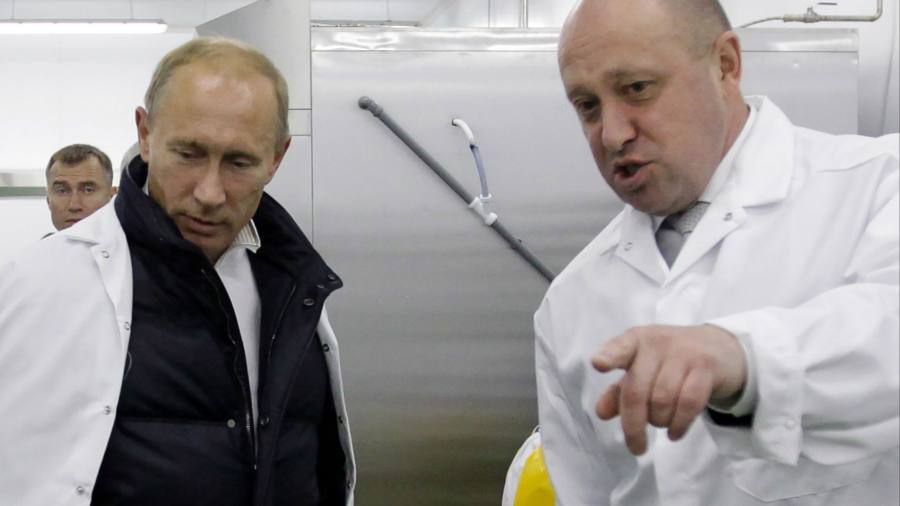
Receive free War in Ukraine updates
We’ll send you a myFT Daily Digest email rounding up the latest War in Ukraine news every morning.
In the eighth, concluding part of Anna Karenina, Leo Tolstoy’s masterpiece, Count Alexei Vronsky, lover of the novel’s tragic heroine, joins thousands of Russian volunteers fighting in the Balkans for the liberation of fellow Slavs from Ottoman rule. “He’s taking a squadron at his own expense!” exclaims one character.
Tolstoy, a pacifist, depicts Vronsky’s behaviour as the impulsive act of a flawed individual who struggled to find a purpose in life even before Anna’s suicide. For modern readers, however, the closing scenes of this novel, published some 150 years ago, are full of resonance for our times. They evoke the long tradition of unofficial, semi-official or secretly state-backed warriors who fight for Russia — a tradition that extends from the tsarist empire’s 19th-century volunteers to the Wagner group of Vladimir Putin’s presidency.
After the aborted mutiny in southern Russia of Yevgeny Prigozhin, Wagner’s founder and leader, the mercenary group faces restructuring or even disbandment at the hands of a once supportive but now wrathful Putin. The days of Prigozhin and his agents roaming across Russia recruiting prison convicts to fight in Ukraine are over. Putin’s crackdown on the uprising’s presumed sympathisers signals a push to dispense with Wagner and puts the war effort under the control of Russia’s regular armed forces and security apparatus.
It is less clear how matters will play out in Africa, Wagner’s other main field of operations. In countries such as the Central African Republic and Mali, Wagner has relied heavily on logistical support from Russian armed forces. However, Wagner’s control of diamond and gold mines allows it to act as an organised crime outfit as well as a mercenary company advancing Putin’s foreign policy goals.
Wagner emerged a decade ago under the auspices of Russia’s GRU military intelligence agency, a connection that differentiates it from the private security companies that blossomed in western countries after the cold war. For Putin, one of Wagner’s most attractive features was that, legally, it did not exist — indeed, it was not until last September that Prigozhin acknowledged he had set up the group in 2014.
Before then, the Kremlin took pleasure in breezy denials that it knew anything about Wagner or its activities in Ukraine, Syria or Africa. This mystery distinguished Wagner from another irregular force doing Putin’s work — the openly brash battalions of Chechen warlord Ramzan Kadyrov.
For western countries, private military outfits came to be valued because they were more adaptable than regular armed forces and less of a drain on the public purse. Governments used them to fight drug traffickers in Latin America, deter pirates in Somalia and conduct clandestine operations in Afghanistan and Iraq. Reaping the post-cold war “peace dividend”, western governments cut defence budgets and filled the hole with private contractors.
All this was done by design, not because governments were weak. It is an altogether different story when the state loses its exclusive control over armed force. When that happens, as Europe’s violent 20th century shows, desperate political leaders may cut deals with the paramilitary, mercenary or volunteer units that proliferate as a result. One example with baleful historical consequences is Germany after the first world war.
Military defeat in November 1918 coincided with a revolution that deposed the kaiser and set up a republic fronted by Social Democrats. The new democracy’s leaders scarcely had time to draw breath before a communist uprising broke out in Berlin in January 1919. Lacking enough regular troops to put down the revolt, the government turned to so-called Freikorps units.
These militias were no friends of democracy but comprised former frontline soldiers, raw cadets and ultranationalist students, all with a taste for unrestrained brutality. Spiritual ancestors of the Nazis, they marauded through Berlin, murdering the communist leaders Rosa Luxemburg and Karl Liebknecht. Later in 1919, Freikorps units ran riot through other German cities and the Baltic states, much like Wagner in Ukraine.
Closer to our times, the Yugoslav wars of the 1990s saw an explosion of paramilitary violence related to the willingness of nationalist leaders to make use of irregular forces. In 1992, Serbian and Bosnian Serb paramilitaries terrorised Bosnian Muslim communities in a blood-soaked rampage of ethnic cleansing. This was made possible by the implosion of the Yugoslav state and the flow of weaponry into private hands. But the killing sprees also relied on the Serb-dominated Yugoslav army, which backed the Bosnian Serbs just as Moscow’s armed forces supported Russian separatists in eastern Ukraine.
The ultimate political responsibility for these atrocities lay with Serbian leader Slobodan Milošević. Josep Borrell, the EU’s foreign policy chief, made a similar point about Putin when he said this week that Prizoghin’s mutiny was “the monster acting against his creator”.
Tolstoy leaves Vronsky’s fate in Anna Karenina unclear, but the implication is that he will die in the Balkan war. Prigozhin’s future is likewise uncertain, but for now he is in Belarus — perhaps the least safe country in Europe for a Russian mercenary commander who has fallen from favour.